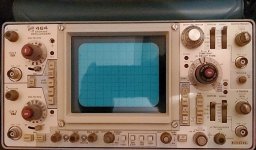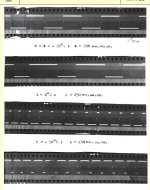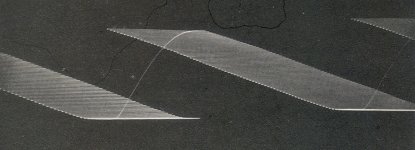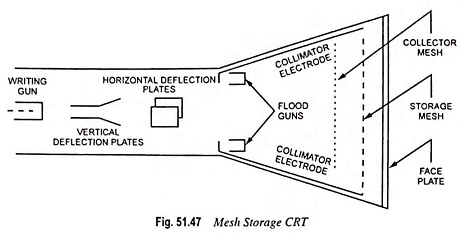The bigger problem with an analog scope is that it isn't a storage scope. It is good at showing repeating pattern signals, but not so good at capturing one off events. That is where a DSO will be much handier.
All that said, I've got an old BK 2120 on my bench because it is just plain fun to mess around with from time to time.
Well that is not entirely correct.
It might depend on how much you know about analog storage scope technology.
Initially the way to do it was with a long persistence phosphor. The classic one was invented in the USA for radar in WW2. It goes by the suffix "P7". in this case they mixed a long yellow and a short persistence blue phosphor on the CRT face.
The typical CRT used in American radar systems of the WW2 era was the 5FP7. Later this tube was used in ECG monitors in Cardiac ICU's in hospitals. To filter out the short blue, they often put an acrylic orange filter over the CRT faceplate. So you will see these cardiac monitors, with orange filters, to capture slow events, like the electrocardiogram, in old medical TV dramas like Marcus Welby MD.
Also, in the UK in the 1960's, the Telequipment Company, made the D52 scope. A dual trace scope. It also came with an option for a tube with the equivalent slow P7 phosphor (although it had a European designation). I have one of these scopes, photo attached. I have used this scope in medical research, work involving slow events. It is a 10MHz scope.
Later, Tektronix saw the need for an analog scope that could store slow events, so they came up with a different idea. The storage tubes in scopes like the 464 or 466 model, 100MHz scopes from the late 1970's to 1980's era. I have these scopes too and they are great for storing long term events, and they are analog. They have moderately complex electronics to support the storage function. I have used this scope on many an occasion to record slow events. But it requires a screen photograph to "save it forever"
But, it is true that they don't have the "permanent" storage result of a digital file, of the digital scope, but, for most cases, they work for your investigations.
I am a little bit of a scope lunatic , I think I have at least 15 or 20 different scopes. So I am well aware of their uses and limitations. But like any instrument in a laboratory, the best one is the thing between the ears. You need to understand the test instruments, to get the best out of them.
(One interesting thing; the Telequipment scopes, if you look very carefully you will see, these scopes were used in the Thunderbird Super-Marionation TV shows from the UK, on the control panels of the various craft and if they were good enough for Virgil, Scott, Alan and Mr. Tracey, they were certainly good enough for me, oops I forgot Parker & Lady Penelope)
On another note, I recently have seen an interesting method of permanent waveform recording from a dual trace analog CRT. An unexposed film was run across the CRT faceplate and the beam exposed the film. This is how the designers of the World's first Satellite, Sputnik 1, recorded the waveforms, back in 1957, of the "manipulator" which switched the two transmitters in that spacecraft alternately on and off. It created a permanent record on film, possibly even longer lasting into our future than a file from a digital scope stored in a flash memory. It might pay to remember, that flash memory, in the long run, is forgettory and it would rarely last longer than books or film.
For your interest I have attached an image showing some of the manipulator recordings from Sputnik 1.

 .
.







